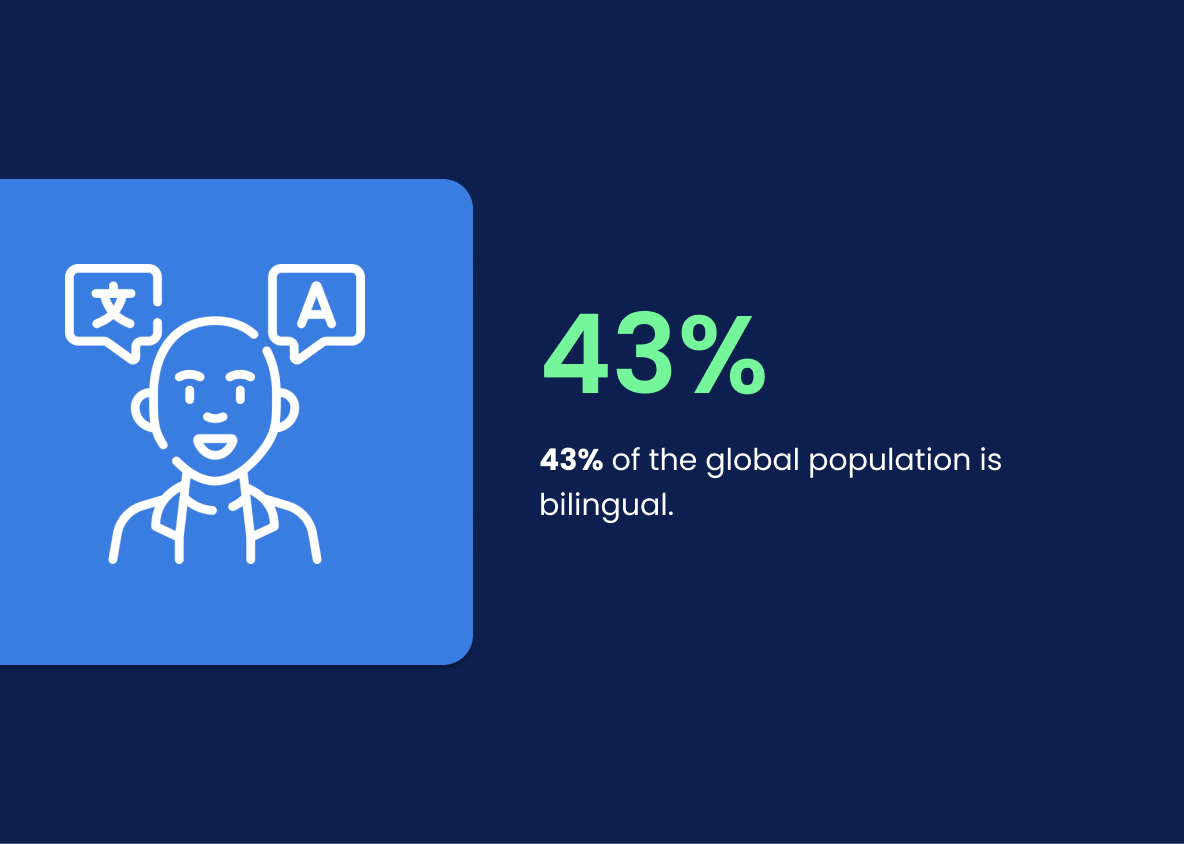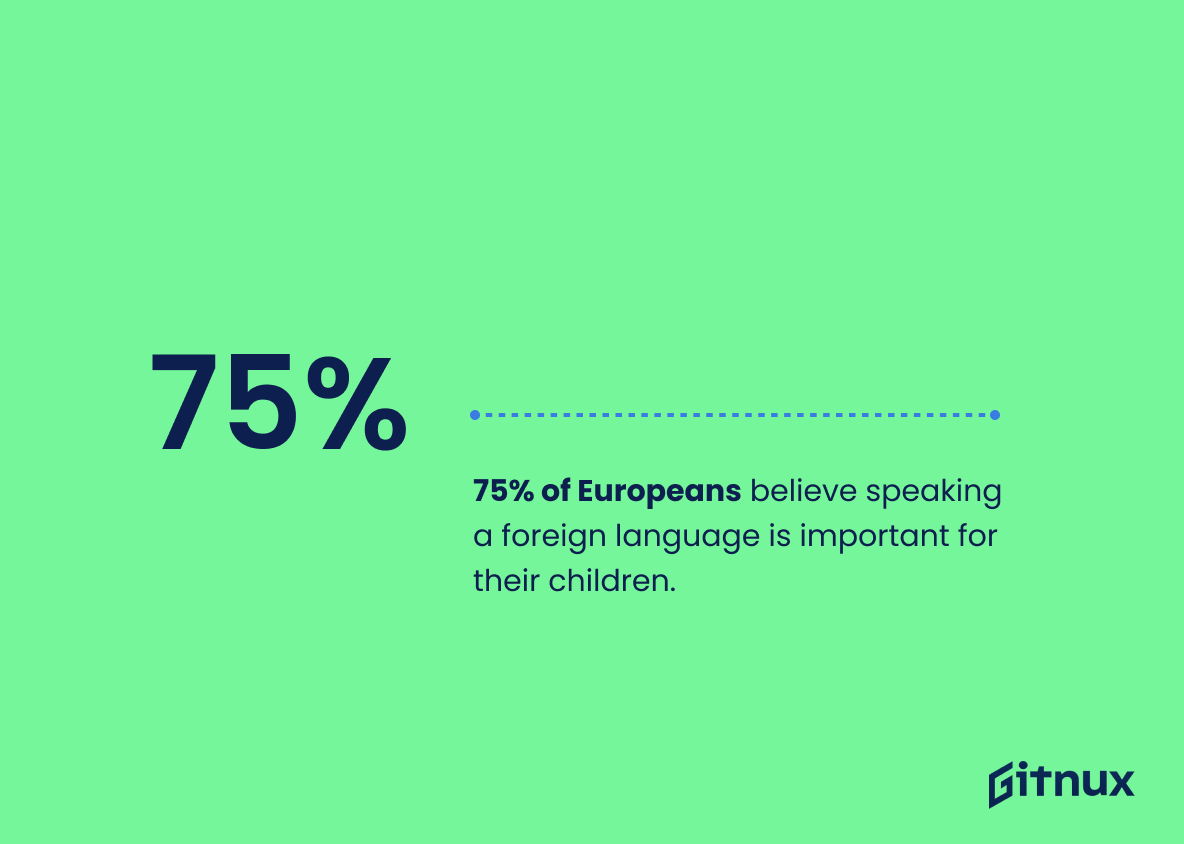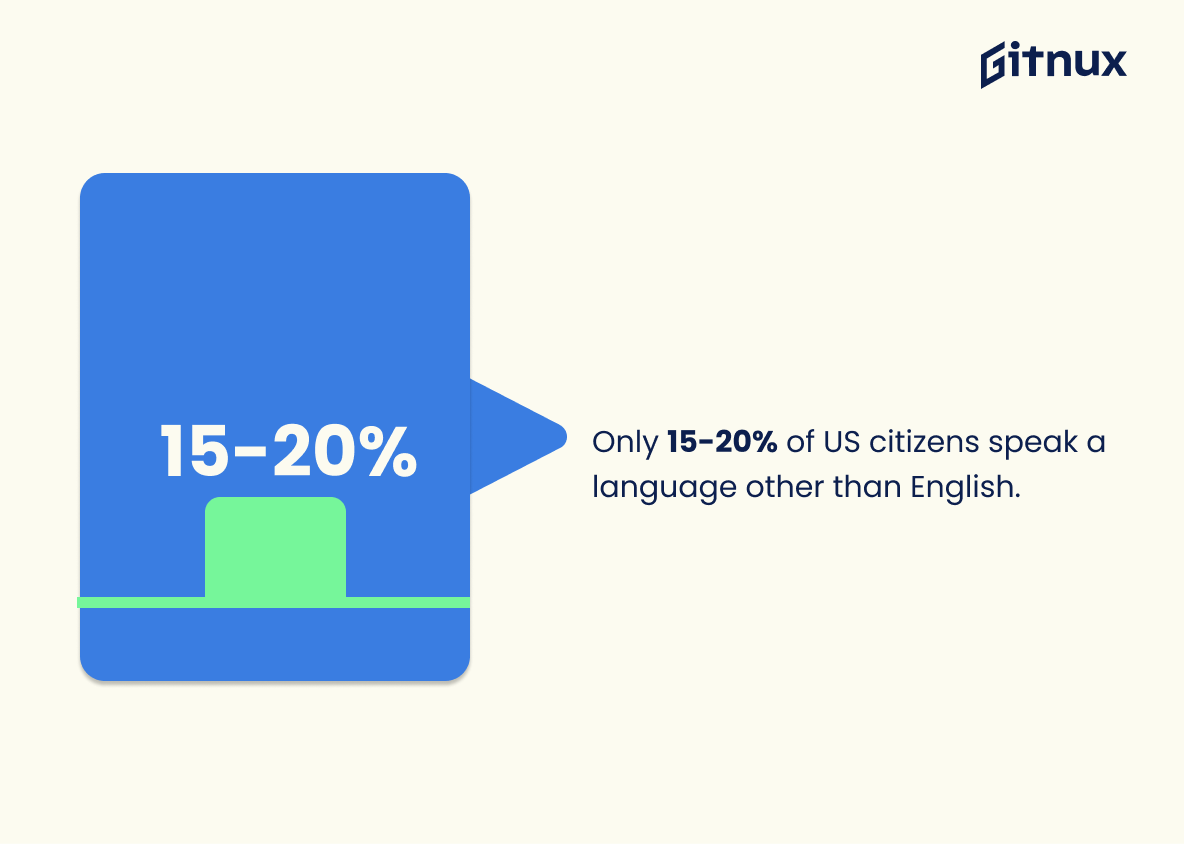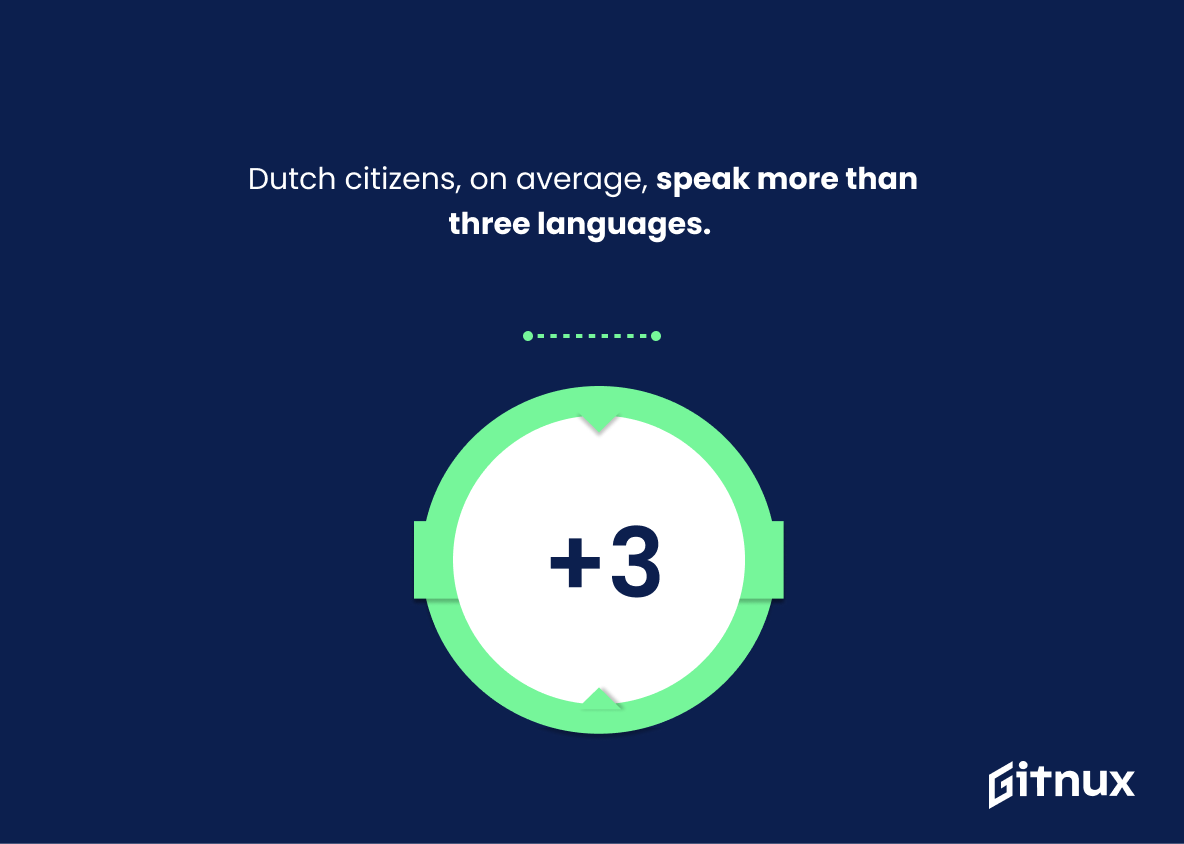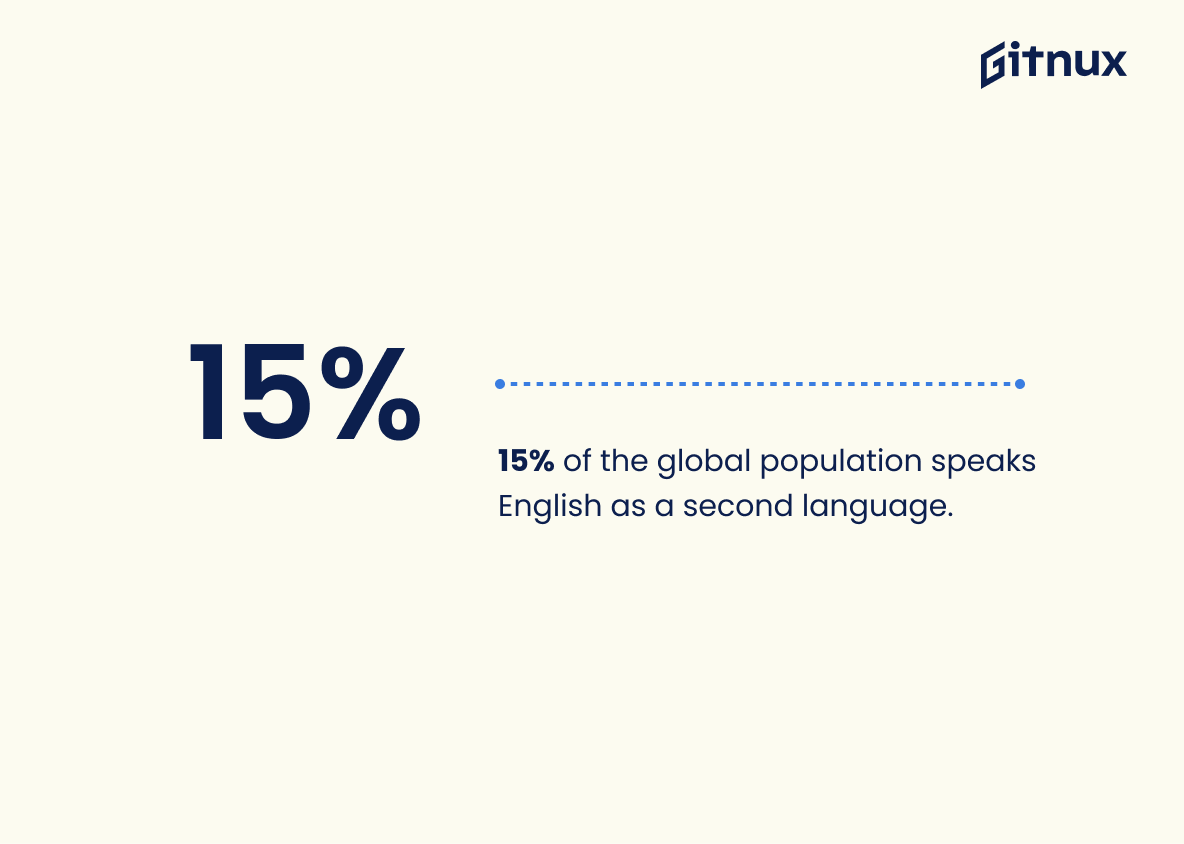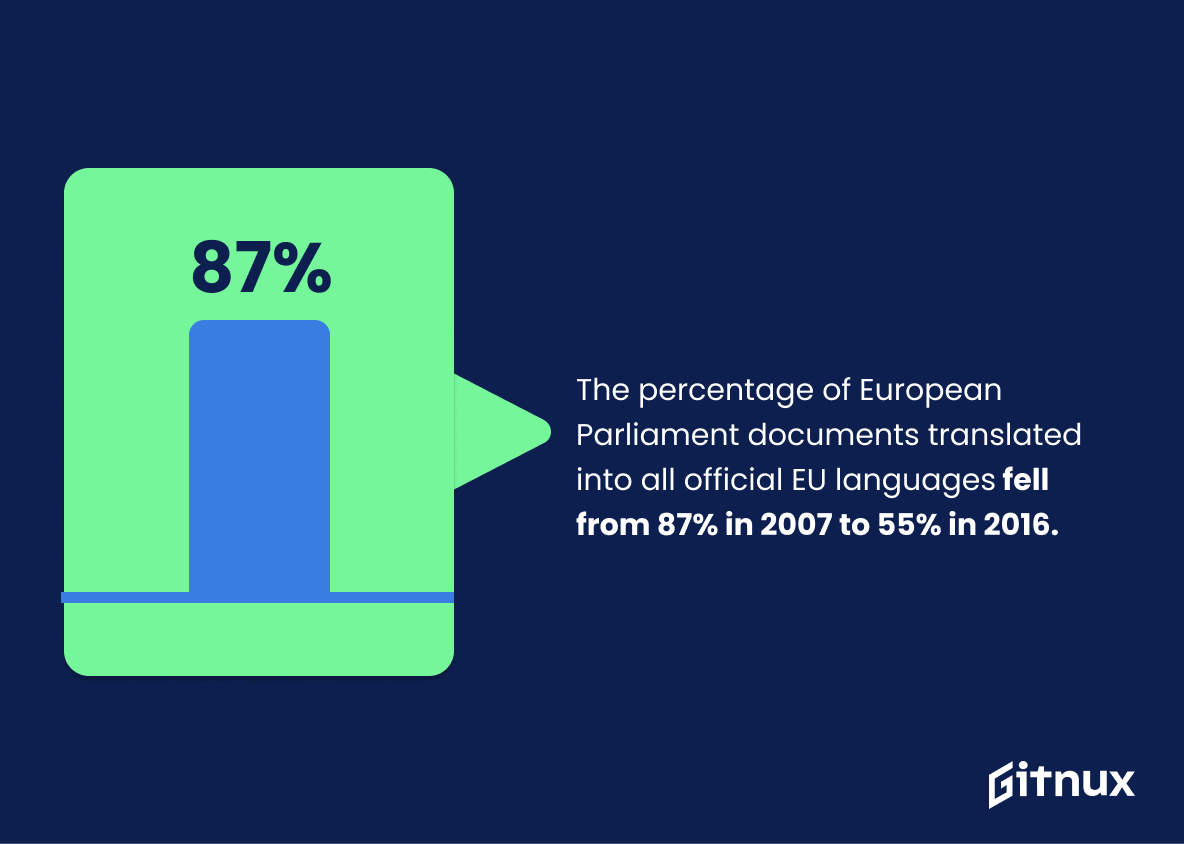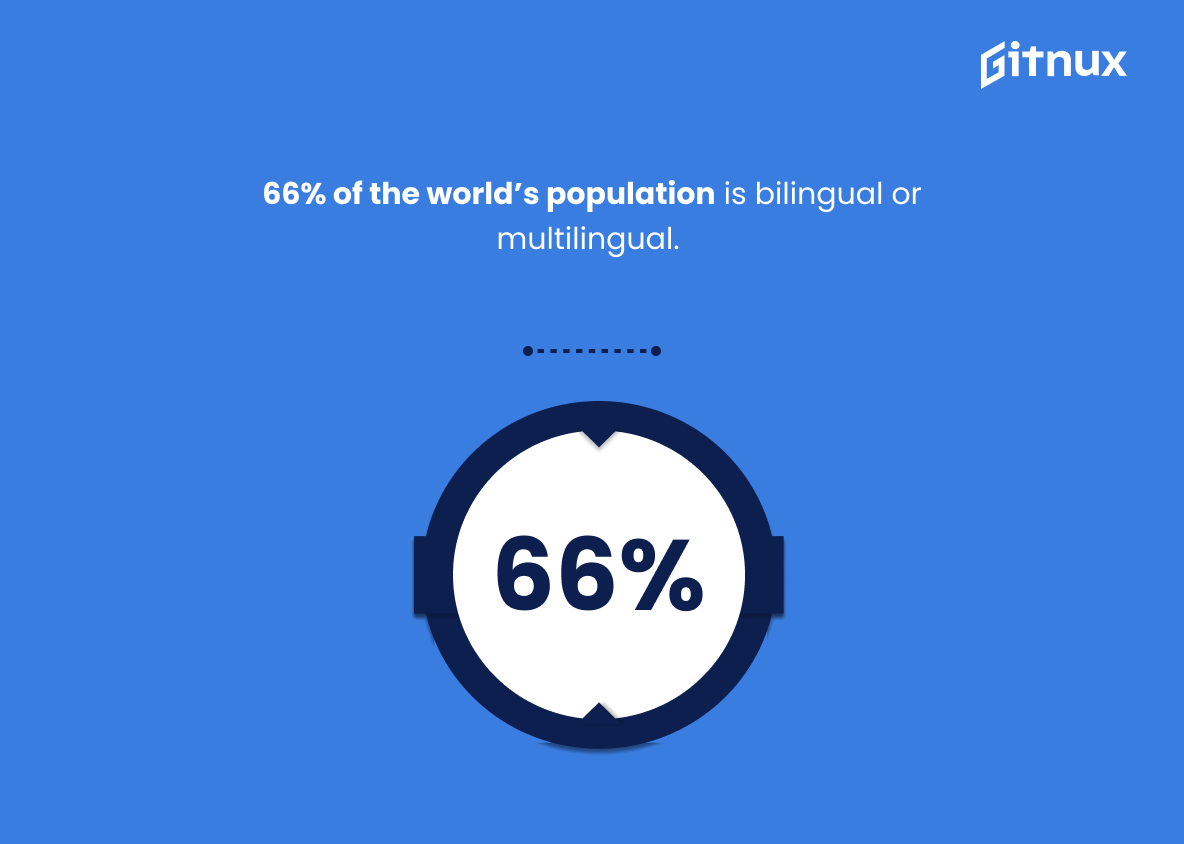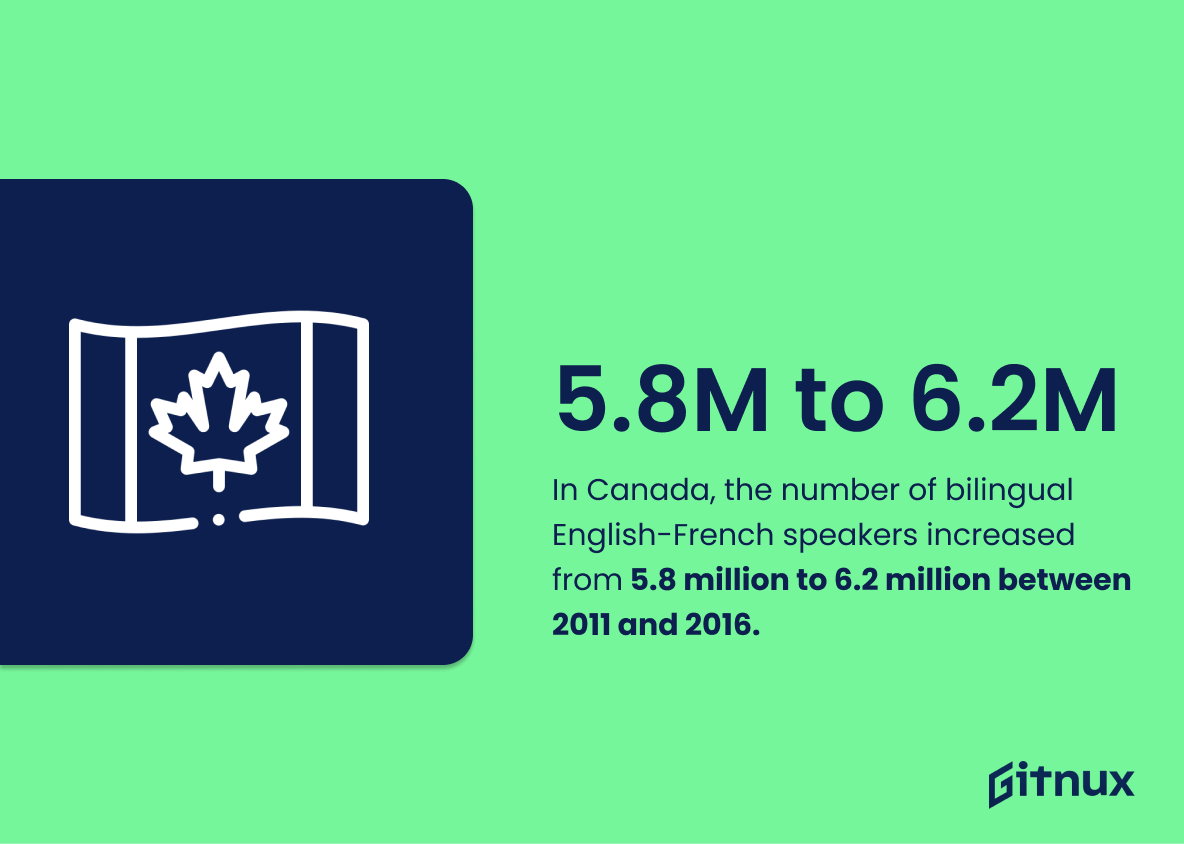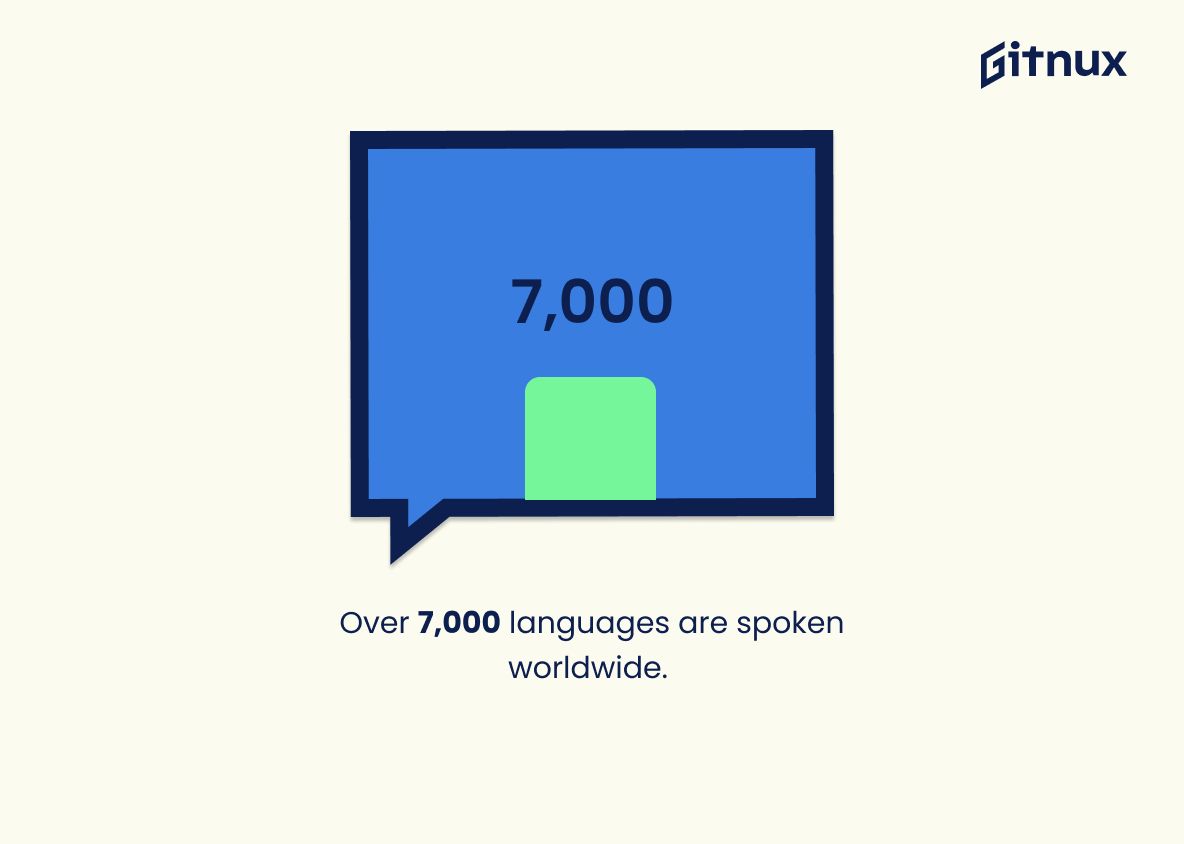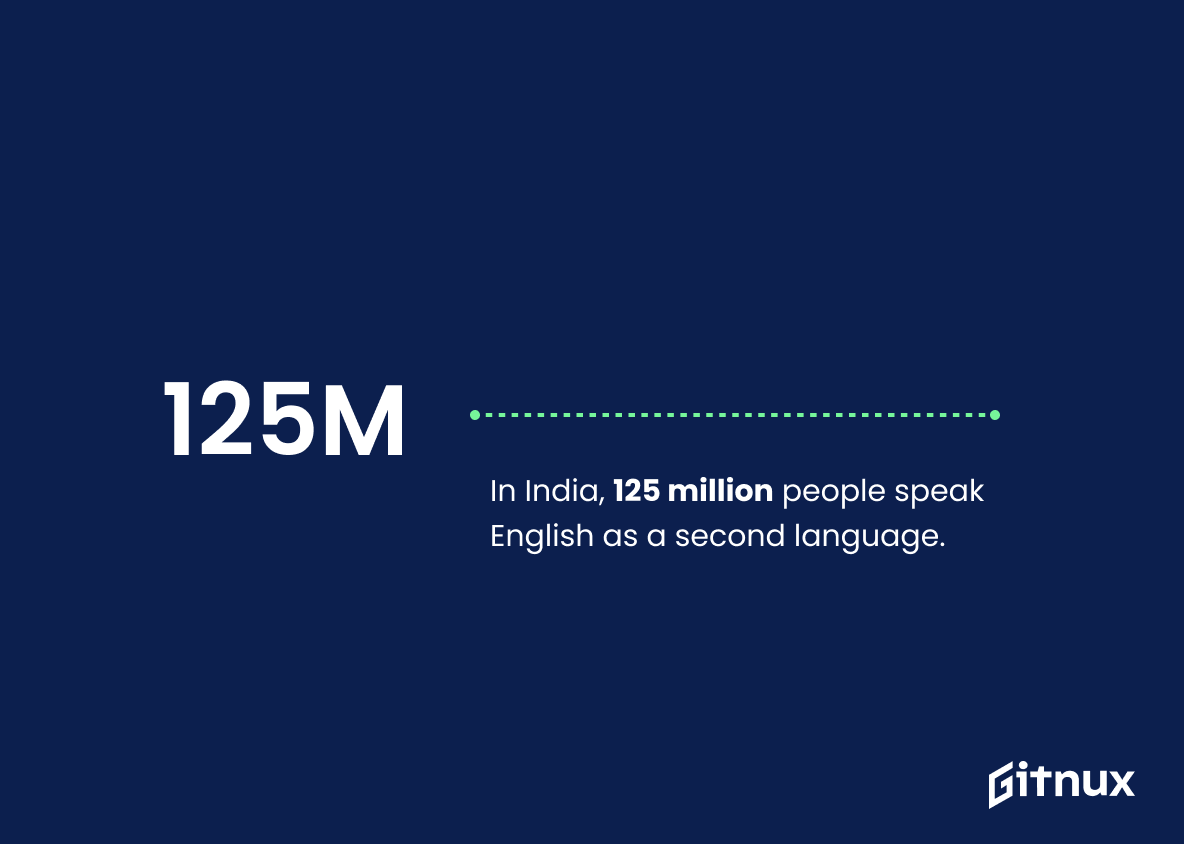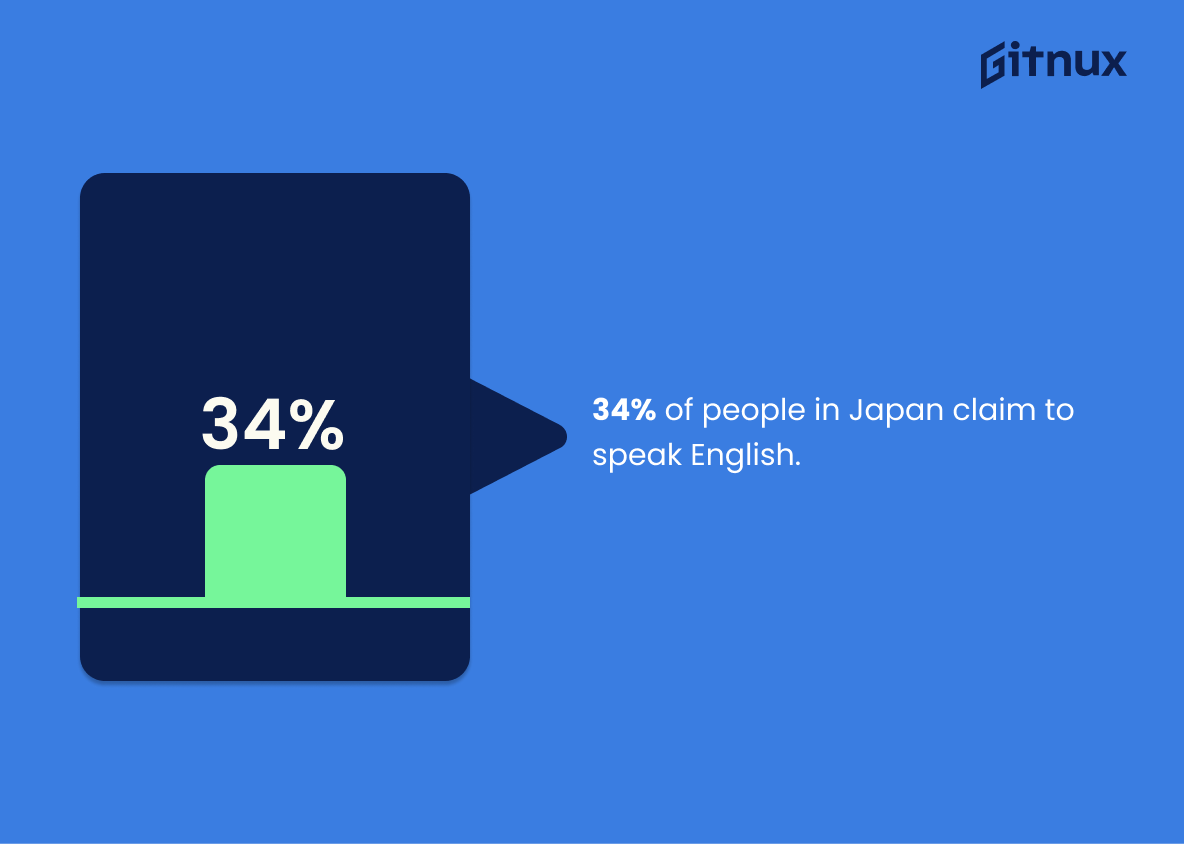The world is becoming increasingly interconnected, and the ability to communicate in multiple languages has become more important than ever. This blog post will explore some of the most interesting statistics about foreign language usage around the globe. From how many people are bilingual or multilingual to which countries have a high percentage of English speakers, this article will provide an overview of current trends in global language use. We’ll also look at data on endangered languages and examine how much money is being invested into language services worldwide. Finally, we’ll discuss why learning a second (or third) language can be beneficial for individuals and society as a whole. So let’s dive right in.
Foreign Languages Statistics Overview
75% of Europeans believe that speaking a foreign language is important for their children.
This statistic is a powerful indicator of the importance Europeans place on foreign language education. It speaks to the value Europeans place on the ability to communicate with people from different cultures and backgrounds, and the potential benefits that come with it. It also highlights the need for more resources to be devoted to foreign language education, as well as the need for more research into the effectiveness of foreign language instruction. In short, this statistic is a powerful reminder of the importance of foreign language education in Europe.
In the United States, only 15-20% of citizens speak a language other than English.
This statistic is a telling indication of the importance of foreign language education in the United States. With such a small percentage of citizens speaking a language other than English, it is clear that more needs to be done to ensure that Americans are equipped with the skills to communicate in multiple languages. This is especially important in a globalized world where the ability to communicate in multiple languages is becoming increasingly valuable.
Dutch citizens, on average, can speak more than three languages.
The fact that Dutch citizens, on average, can speak more than three languages is a testament to the importance of foreign language education in the Netherlands. It speaks to the commitment of the Dutch people to learning and mastering multiple languages, and the value they place on being able to communicate with people from different cultures. This statistic is a powerful reminder of the importance of foreign language education, and the potential benefits it can bring to individuals and society as a whole.
Chinese is the most spoken language in the world, with 1.2 billion speakers.
This statistic is a powerful reminder of the importance of Chinese as a global language. It highlights the fact that Chinese is the most widely spoken language in the world, with over 1.2 billion speakers, and is a language that is increasingly being used in international business, education, and travel. This statistic is a testament to the growing importance of Chinese in the global community and serves as a reminder of the need to understand and appreciate the language.
The percentage of American elementary schools offering foreign language instruction decreased from 24% in 1997 to 15% in 2008.
This statistic is a telling indication of the state of foreign language instruction in American elementary schools. It shows that in the span of 11 years, there has been a significant decrease in the number of schools offering foreign language instruction. This is a concerning trend, as it suggests that fewer and fewer students are being exposed to the benefits of learning a foreign language at an early age.
English is spoken as a second language by 15% of the global population.
This statistic is a powerful reminder of the far-reaching impact of the English language. It highlights the fact that English is a global language, spoken by a significant portion of the world’s population. This is an important point to consider when discussing foreign language statistics, as it demonstrates the importance of English in the global context.
The percentage of European Parliament documents translated into all official EU languages fell from 87% in 2007 to 55% in 2016.
This statistic is a stark reminder of the importance of language in the European Union. It highlights the fact that the ability to communicate in multiple languages is essential for the EU to function effectively. By decreasing the percentage of documents translated into all official EU languages, it is likely that communication between EU members is becoming more difficult, leading to a decrease in collaboration and understanding. This could have a detrimental effect on the EU’s ability to work together and could lead to a decrease in the effectiveness of the European Parliament.
66% of the world’s population is bilingual or multilingual.
This statistic is a powerful reminder of the importance of foreign languages in our globalized world. It highlights the fact that the ability to speak multiple languages is becoming increasingly necessary in order to communicate effectively with people from different cultures and backgrounds. It also serves as a reminder that language learning is an invaluable skill that can open up a world of opportunities for those who possess it.
In Canada, the number of people who can speak both English and French increased from 5.8 million to 6.2 million between 2011 and 2016.
This statistic is a testament to the growing bilingualism in Canada, demonstrating the increasing importance of being able to speak both English and French. It is a sign of the country’s commitment to preserving its linguistic heritage and promoting bilingualism as a valuable asset. This statistic is a reminder of the importance of foreign language learning and the need to continue to invest in language education.
There are over 7,000 languages spoken in the world.
This statistic is a powerful reminder of the incredible diversity of languages that exist in the world today. It highlights the importance of learning and understanding different languages, and the value of being able to communicate with people from different cultures and backgrounds. It also serves as a reminder of the need to preserve and protect these languages, as many are in danger of becoming extinct. This statistic is an important part of any discussion about foreign language statistics.
In India, the number of people who speak English as their second language is 125 million.
This statistic is a testament to the importance of English in India, highlighting the fact that 125 million people have chosen to learn it as their second language. This speaks to the power of English as a global language, and its ability to bridge cultural divides. It also serves as a reminder of the importance of language learning in general, and the potential for learning a foreign language to open up new opportunities.
In Japan, 34% of people claim to be able to speak English.
This statistic is significant in the context of foreign language statistics because it demonstrates the prevalence of English as a second language in Japan. It indicates that a large portion of the population is able to communicate in English, which could be beneficial for international business and travel. Additionally, it could be an indication of the importance of English in the Japanese education system.
In the United States, 20.7% of households speak a language other than English.
This statistic is a powerful reminder of the diversity of the United States. It speaks to the fact that there are many different languages spoken in the country, and that foreign languages are an important part of the American experience. This statistic is also important in terms of understanding the cultural and linguistic landscape of the United States, and how it has changed over time. It is a valuable insight into the cultural and linguistic diversity of the country, and can be used to inform policy decisions and research.
28.4% of European citizens have no knowledge of a foreign language.
This statistic is a stark reminder of the importance of foreign language education. It highlights the need for more resources to be devoted to language learning, as well as the need for more effective language teaching methods. It also serves as a warning that if we do not take steps to improve language education, the number of Europeans with no knowledge of a foreign language could continue to rise.
UNESCO classifies 2,449 languages as endangered, which is about a third of all languages in the world.
This statistic serves as a stark reminder of the fragility of language diversity in the world. With a third of all languages in the world classified as endangered, it is clear that the world is facing a crisis of language loss. This is a cause for concern, as language loss can have a significant impact on cultural identity and the ability to access knowledge.
The Language Services Market size reached $46.52 billion in 2020 and is expected to grow at a CAGR of 6.7%.
This statistic is a testament to the growing importance of foreign languages in the modern world. As the Language Services Market size continues to expand at a CAGR of 6.7%, it is clear that the demand for foreign language services is on the rise. This is indicative of the increasing need for individuals and businesses to communicate in multiple languages, and the potential for growth in the language services industry. This statistic is an important piece of information for anyone interested in foreign language statistics, as it provides insight into the current state of the industry and its potential for growth.
Conclusion
The statistics presented in this blog post demonstrate the importance of foreign language learning and its prevalence around the world. From Dutch citizens speaking more than three languages to English being spoken as a second language by 15% of the global population, it is clear that bilingualism and multilingualism are becoming increasingly common.
Additionally, with 2,449 languages classified as endangered by UNESCO and only 15-20% of Americans able to speak a language other than English, there is an urgent need for increased access to foreign language education both domestically and abroad. The Language Services Market size reaching $46.52 billion in 2020 further highlights how important these skills have become on a global scale.
References
0. – https://www.ec.europa.eu
1. – https://www.bbc.com
2. – https://www.thehindu.com
3. – https://www.nces.ed.gov
4. – https://www.europa.eu
5. – https://www.languageknowledge.eu
6. – https://www.ethnologue.com
7. – https://www.omniglot.com
8. – https://www.2.statcan.gc.ca
9. – https://www.worldbank.org
10. – https://www.grandviewresearch.com
11. – https://www.americancouncils.org
12. – https://www.gallup.com
13. – https://www.europarl.europa.eu
14. – https://www.unesdoc.unesco.org
15. – https://www.census.gov
